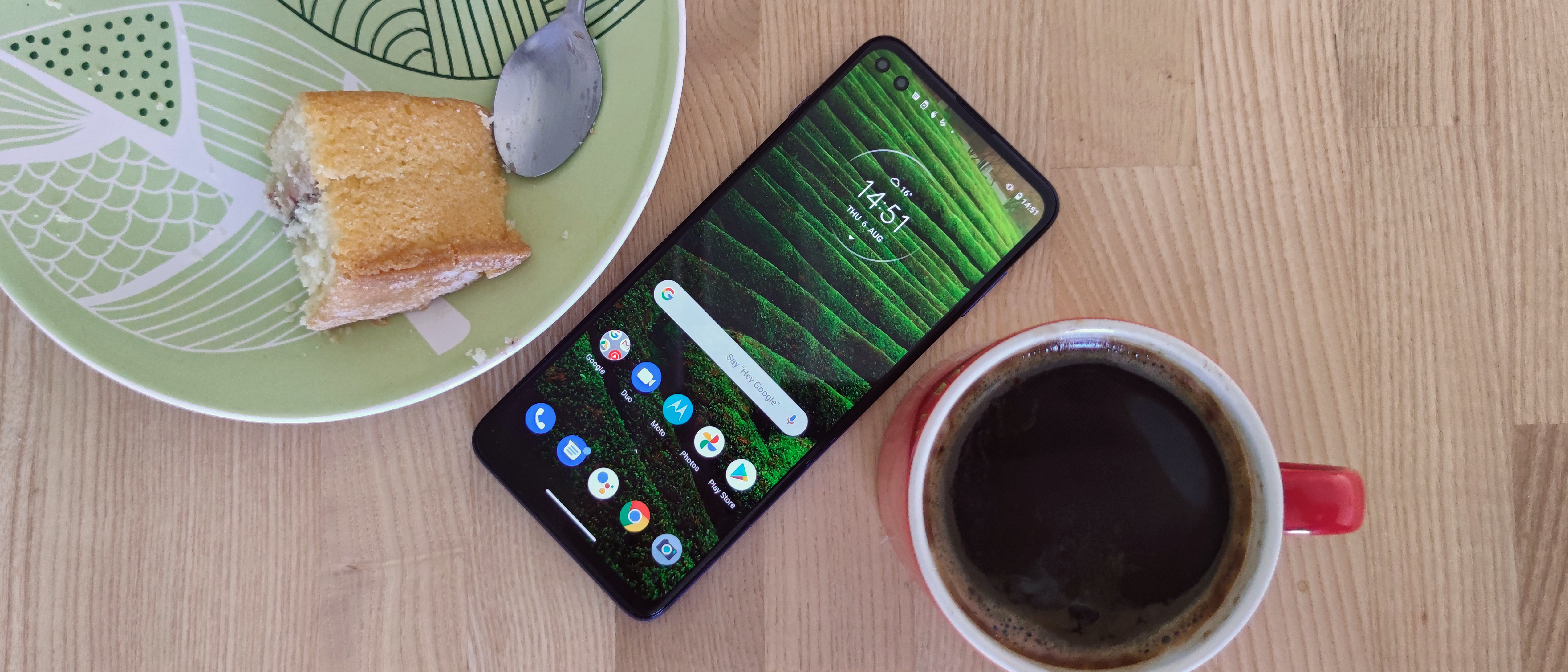TechRadar Verdict
The Moto G 5G Plus is a good all-rounder with a better chipset, battery life and screen quality than many other devices at its price point. It’s also got a bigger screen than its siblings. The fact that it’s also 5G-compatible makes it an even more tempting offer, as it’s the cheapest 5G phone at launch, although as with all Moto phones it has its fair share of annoying quirks. It’s good, especially as a cheap 5G handset, but not game-changing.
Pros
- +
Affordable 5G
- +
Feels relatively snappy to use
- +
Long-lasting battery
Cons
- -
Fingerprint sensor doesn’t always work
- -
Cameras aren’t the best
- -
Irritating Google Assistant button
Why you can trust TechRadar
Two-minute review
What is the Moto G 5G Plus? It’s a mouthful of a name for a start (with a different name, the Motorola One 5G, in the US), and it’s the first 5G-compatible entry in Motorola’s affordable G line; it’s also, as we write this review, the cheapest 5G phone in the regions where we know it’s being released. But more than any of those things, it’s the Motorola Edge Lite in all but name.
It’s certainly hard to see this phone as belonging to the same series as the Moto G8 and G Power, as it brings some major changes over those staples of the G8 / G line (Motorola seemed to use those designations interchangeably for its 2020 handsets).

Price and availability
Design
Display
Cameras
Specs and performance
Software
Battery
Should I buy it?
The fingerprint sensor is on the side, not the back, and is embedded into the power button, and the phone has a physical Google Assistant button, a longer 21:9 screen and two front-facing cameras – all things its predecessors lacked. This is also the biggest screen we’ve seen on a Moto G phone.
So is the Moto G 5G Plus the renaissance the densely populated and often confusing Moto G series needed, or effectively, the Motorola Edge Lite that many fans of Motorola's phones were hoping to see?
Well, it’s more the latter than the former, but it doesn’t hit either mark perfectly – instead, it’s just a good all-rounder phone that won’t disappoint those looking for a cheap 5G phone, but which is unlikely to blow anyone away either.
The Moto G 5G Plus has a Snapdragon 765G chipset, which is impressive for a budget handset, and it means the phone feels smooth and snappy in use, something the maximum 90Hz screen refresh ratio – another impressive feature at this price point – helps with.
Talking of the screen, that refresh ratio is on a 1080 x 2520 display with a 21:9 aspect ratio. The handset feels pretty long and thin, but it’s a little easier to hold than its 6.7-inch size would make you think.
Sign up for breaking news, reviews, opinion, top tech deals, and more.
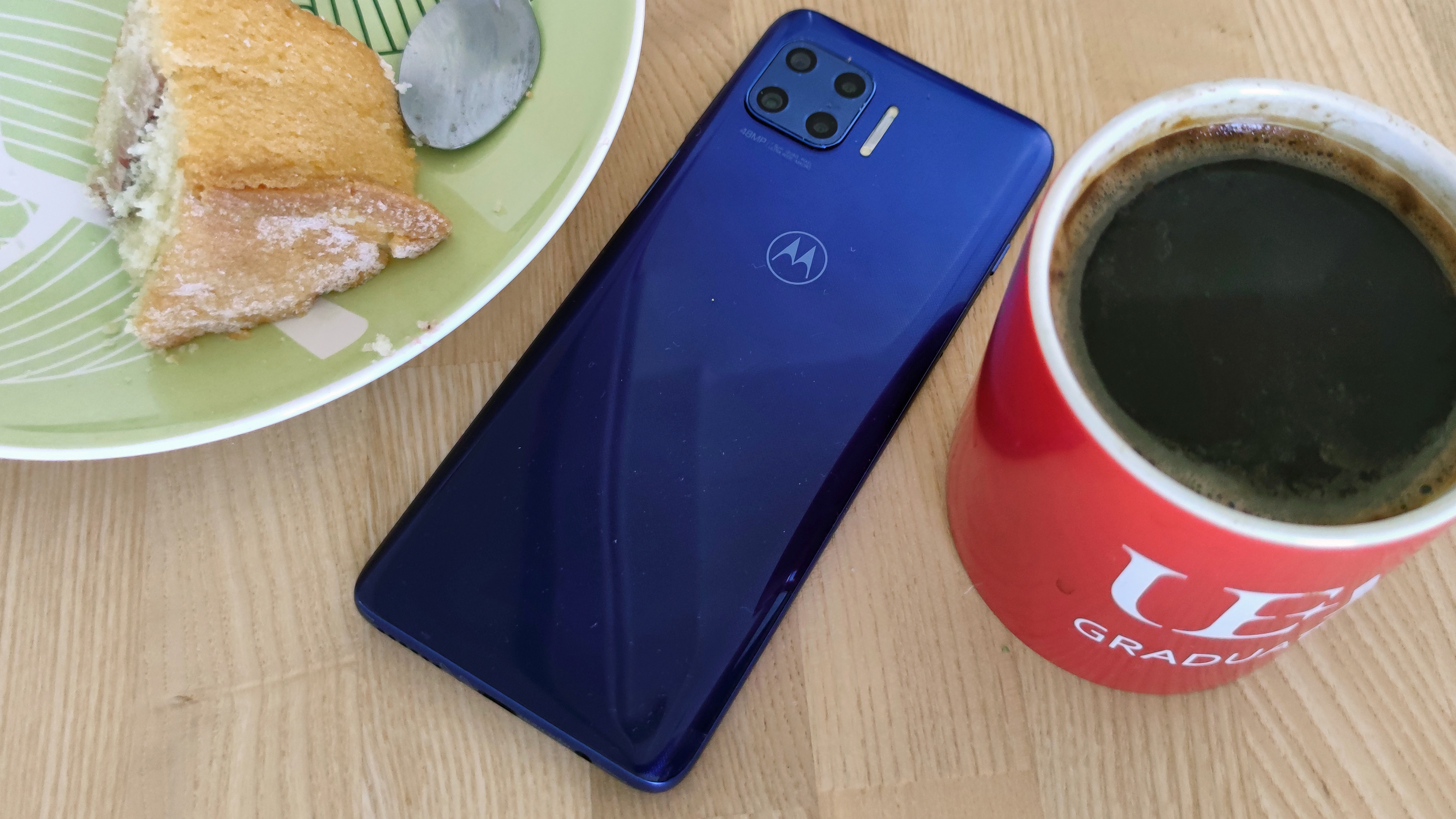
That said, the in-the-hand experience isn’t perfect – the side-mounted fingerprint sensor is too high to be conveniently reached, and you can’t easily press the power button the sensor is mounted on either. This hurts the double-tap shortcuts, a potentially-cool feature Motorola has packed into the fingerprint sensor.
On top of that, some trademark Motorola issues are present. The cameras aren’t fantastic, in particular – with four rear and two front-facing cameras it feels like a case of quantity over quality, and one camera on each side would likely take better pictures with the help of some effective processing.
Many of the issues with, and the strengths of, the Moto G 5G Plus are also present in the Motorola Edge, which is why we’re comparing the two handsets. But while the Edge felt like it had an element of flair in its design, making it a tempting option for some, the Moto G 5G Plus just feels ‘okay’ – a perfectly sound option for casual buyers, but ultimately uninspiring.
Moto G 5G Plus price and availability
The Moto G 5G Plus is available in the UK and Europe, as well as in the US under a different name (the Motorola One 5G) but Motorola hinted that the phone could come to other regions towards the end of 2020.
There are two versions of the Moto G 5G Plus: a 64GB storage and 4GB RAM version, which costs £299 in the UK (about $375 or AU$535), and a 128GB / 6GB model that costs £349 / $445 (about AU$635). The latter configuration is the only one available in the US.
At that price the phone undercuts the Huawei P40 Lite 5G, which was for a brief time the cheapest 5G phone, by about £20 in the UK, and at time of writing there are no 5G phones available for less.
Design
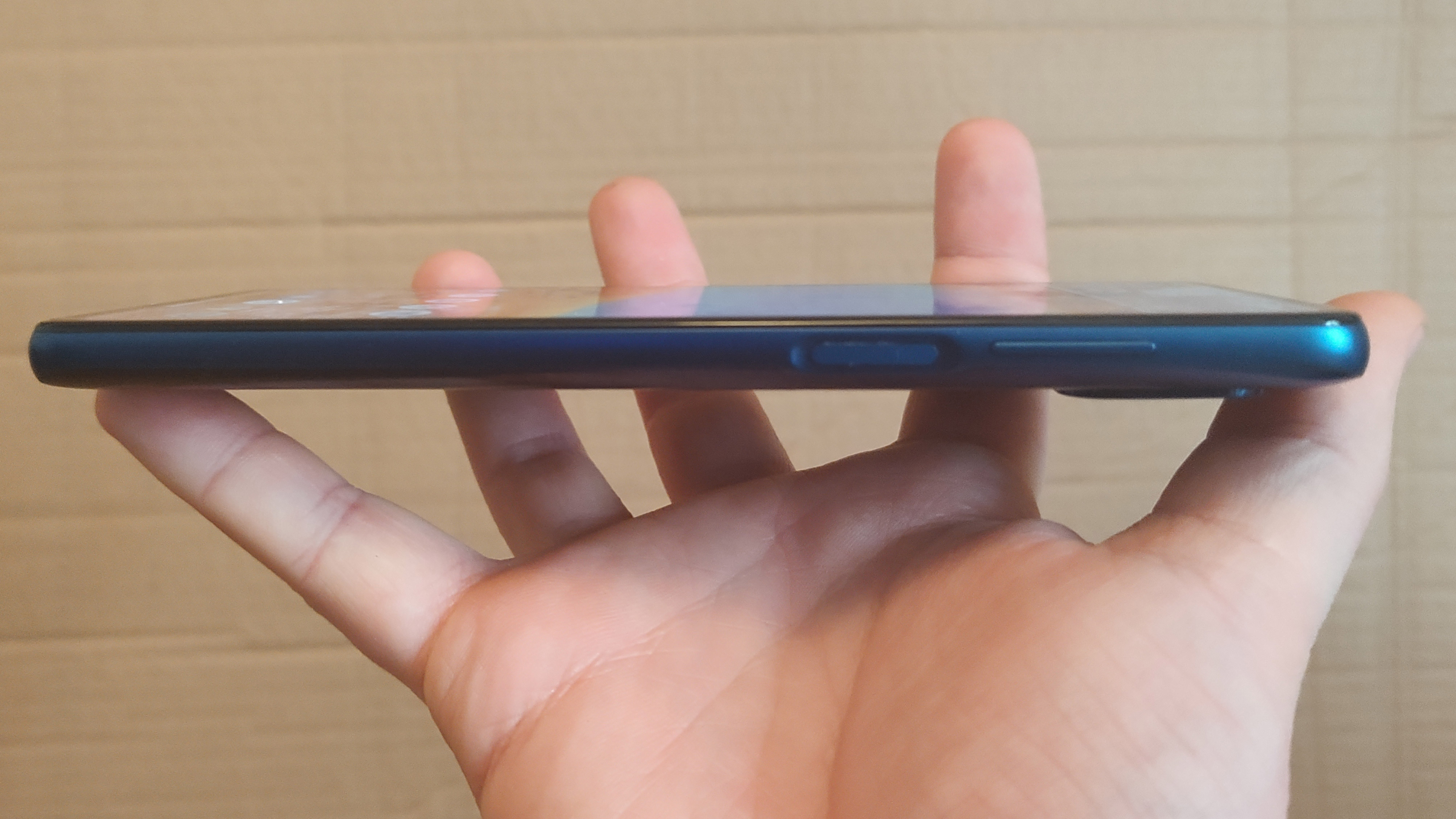
The Moto G 5G Plus is emphatically a plus-sized handset, even compared to the Moto G8 Plus. It’s bigger than its siblings, with a larger screen (as we’ll get into) but the G 5G Plus isn’t too wide, so it won’t be much of a stretch to hold it comfortably for most people.
The phone’s dimensions are 168 x 74 x 9mm so it’s y as long and thick as your average smartphone, just not as wide. At 207g it’s a little heavier than your average handset, but not by much.
On the front of the phone, the screen takes up the majority of the space, broken up only by a fairly minimal bezel (well, minimal for Motorola phones, which often have thicker ones) and also the dual punch-hole cutouts for the cameras.
The back of the phone houses a square camera bump, which doesn’t stick out too far, as well as a large flash module and the Motorola logo. The phone has a plastic back, but it feels sturdy, and not cheap as can be the case with some other plastic phones.
A surprise feature on the Moto G 5G Plus is the side-mounted fingerprint scanner, as on Moto G phones they’re typically on the back. This is housed on the power button on the right edge, just below the volume rocker. We found it a little hard to reach given how we naturally grip a phone – we had to stretch to reach it, which made it tricky to hit the fingerprint scanner with our thumb precisely enough to register, but you only need to touch it with your thumb to wake the handset.
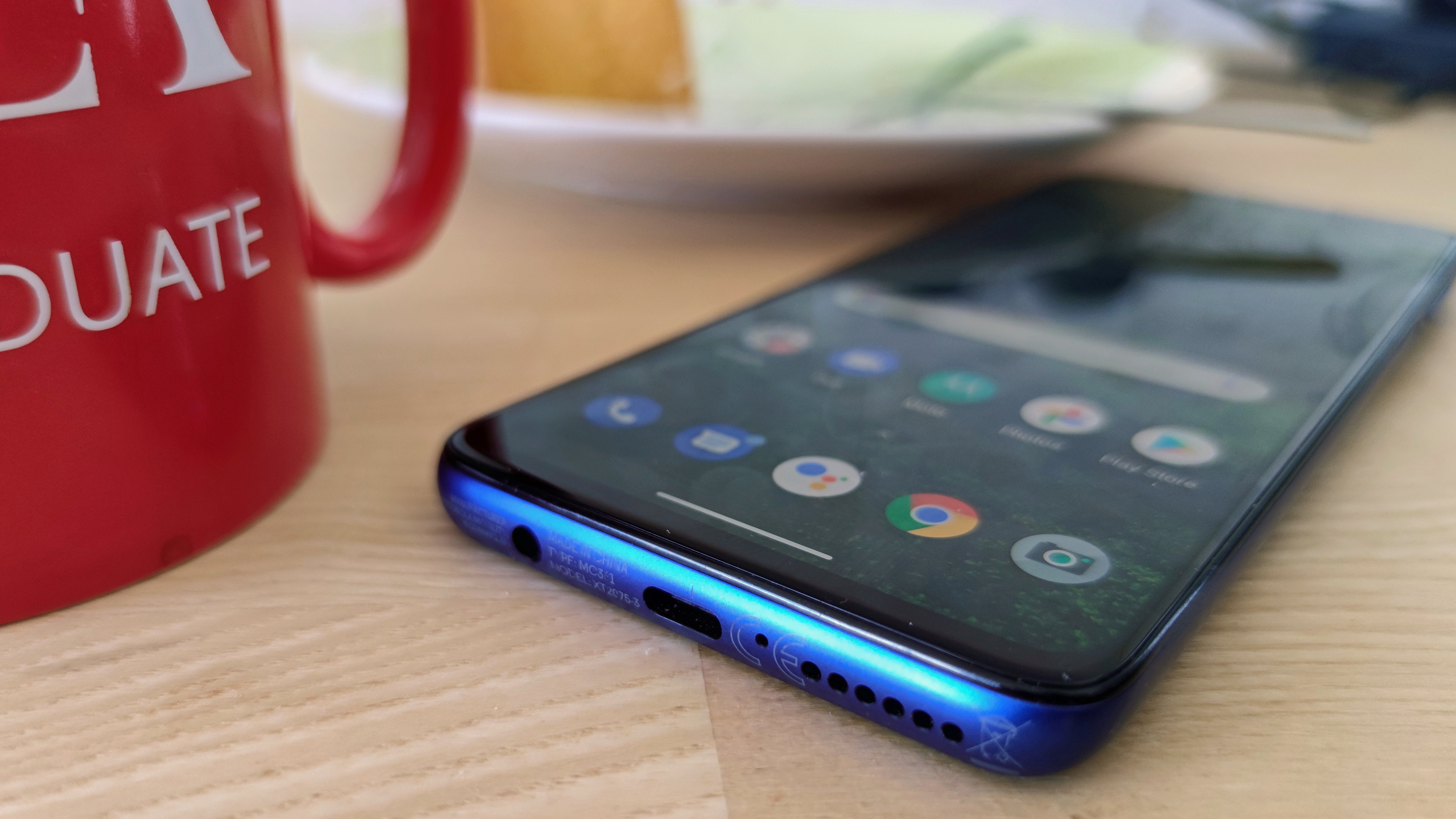
On the left edge of the phone, at the top, is a Google Assistant button – press this and your handy phone AI companion will pop up. We almost always accidentally pressed this when putting the phone in a trouser pocket, and now and then while handling the phone too, and we found this increasingly annoying the more we used the Moto G 5G Plus – after all, summoning it pauses games, music, or whatever else you’re doing.
The Moto G 5G Plus has a USB-C port, and like most Moto phones it has a 3.5mm headphone jack, so fans of wired audio are catered for.
The phone comes in only one color, a blue shade that’ll be familiar to all people who’ve seen Moto G phones, because they all come in it.
Display
After implementing 21:9 screens on its Motorola One and Edge lines already, it seems Motorola has chosen the G 5G Plus to introduce the longer aspect ratio to the Moto G line.
The Moto G 5G Plus has the drawback common to all 21:9 phones, in that it’s quite long and can be hard to fit into a pocket, but it has the advantages too: as we’ve mentioned, it’s relatively thin and so fairly easy to hold, and you’ve also got enough space to view two apps at once, while movies can generally be watched without blacked ‘letterbox’ bars at the top and bottom.
The Moto G 5G Plus screen measures 6.7 inches diagonally, making it the biggest Moto G phone by some way and also one of Motorola’s biggest handsets, along with the Edge devices.

You’re looking at a 1080 x 2520 resolution here – that equates to 2K, which is fairly average for a phone screen resolution at this price point at least, although some competitors only have lower-res 720p screens.
Generally, the screen is nice to look at, with its HDR10 rating ensuring good dynamic range. It has a 90Hz maximum refresh rate too which makes navigating the phone feel smooth; you can turn this down to 60Hz (or select an automatic mode which switches between 60Hz and 90Hz depending on what you’re doing) if you want to save some battery life, but given the phone’s impressive battery life (more on that in the Battery section) we didn’t feel the need to.
This is the first Moto G phone to have a 90Hz display, and depending on where you are it may well be the cheapest phone to offer the feature, which has so far been limited to higher-end devices.
Cameras
The Moto G 5G Plus has a whopping six cameras – four on the back and two on the front – which is quite the haul when you realize that even the iPhone 11 Pro Max only has four. As with most smartphone camera setups, however, quantity isn’t necessarily indicative of quality, and the phone is only okay for photography, not great.
On the front is a 16MP f/2.0 selfie camera, which is joined by an 8MP f/2.2 ultra-wide camera for group shots. Pictures look pretty good when taken in well-lit conditions, although they’re perhaps a bit grainy when the light drops. There’s plenty of detail in selfies, especially when you use the main camera, and bokeh effects in Portrait mode generally look good.

There’s a beauty mode available for both regular or ultra-wide selfies, but this took pictures which quite frankly looked horrifying – it tends to smooth out the detail in facial features to a comedic degree, so we’d recommend leaving this alone.
The rear array comprises 48MP f/1.7 main, 8MP f/2.2 ultra-wide, 5MP f/2.2 macro and 2MP f/2.2 depth cameras.
Pictures taken with the main camera looked fine in terms of detail, but not great for color or contrast, as snaps looked a bit dim with low dynamic range. Areas of shadow or darkness looked murky, and snaps of greenery tended to display the same shade of green throughout, rather than a variety of tones; only occasionally, in really good lighting, did pictures appear to ‘pop’ a little.
There’s no optical zoom here, but the 8x digital zoom was actually a little better than we expected – zoomed-in pictures didn’t look as grainy and horrible as they sometimes can.
Snaps taken using the ultra-wide camera seemed to have the same vibrancy issue as those from the main camera, but at least there wasn’t too much edge distortion in these snaps, which can be a feature of ultra-wide shots, and is an issue we’ve had with some Moto phones in the past.
We should point out that on several occasions we noticed the camera app crashed if we tried to switch to the ultra-wide camera, even if we tried closing and reopening the app. It’s not clear what caused this, but we hope the issue gets fixed in a patch.
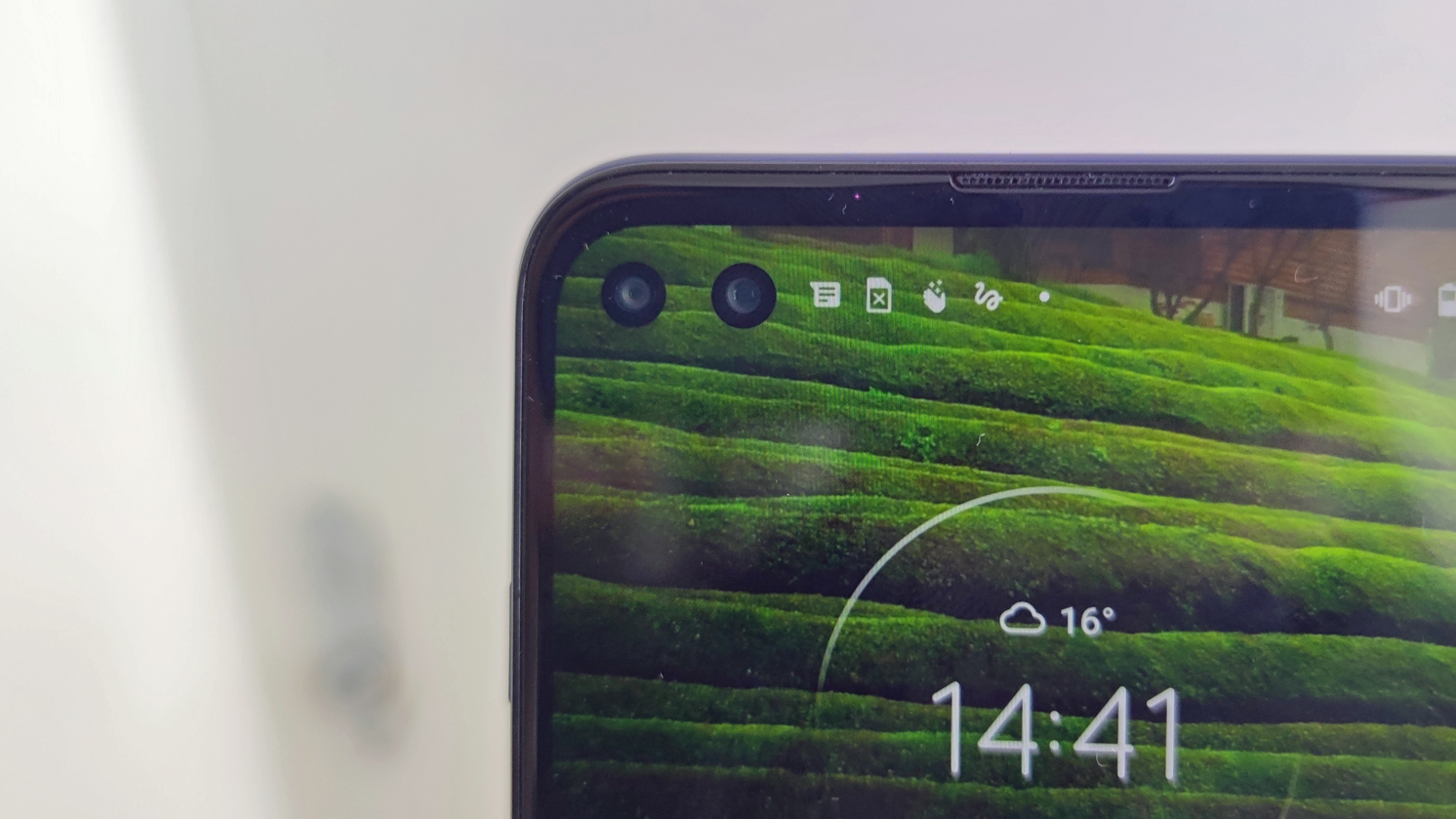
We were pleased by the performance of the macro snapper here, as these don’t always perform well. When we switched to macro mode the camera was quick to focus on objects that were really close, especially textured surfaces, and while the sensor is relatively low-res, that’s not such an issue with close-ups; in fact, photos actually looked a little punchier than those we took with the main camera.
More often than not macro cameras on phones can feel a little superfluous, so we’re glad to see one that’s actually useful here. On the other hand, depth sensors can feel superfluous too, and the one on the Moto G 5G Plus seems to be just that: photos didn’t have much obvious depth of field, and the Portrait mode barely added any background blur at all.
Motorola has introduced a new camera feature in the G 5G Plus: Smart Composition, which auto-crops pictures you take to improve the framing (using the rule of thirds along with some AI smarts). This was only applied to one picture we took while testing the phone, and it didn’t tweak it much – which may mean we’re framing our shots properly, although perhaps the feature just isn’t too intrusive.
The Moto G 5G Plus has 4K video recording, as many phones do, but it’s pretty special in that you can record in the 21:9 aspect ratio, as not many phones offer that ability, and if they do it’s not at that resolution. That’s the ratio many movies are shot in, and some like to shoot home movies in that aspect ratio too.
Motorola phones typically don’t have amazing camera capabilities, and that seems to be because the AI post-processing is a little lightweight. If you buy the Moto G 5G Plus, we’d recommend downloading a photo-editing app to improve your snaps.
Saying that, few phones at this price point have any form of photography optimization software, so Motorola isn’t exactly behind its competition – and overall the phone’s camera holds up well against similarly-priced rivals.
Camera samples









Specs and performance
The Moto G 5G Plus runs on the Snapdragon 765G chipset – that’s tech you’d typically find in a high mid-range phone, but some more affordable devices like this have it too. Thanks to its presence, the phone feels way snappier to use than most other Moto G phones, with the 4GB or 6GB RAM helping too.
Apps load quickly, you can flick between apps with little delay, and games play smoothly. Sure, this isn’t a top-end processor, and now and then an app will load slowly or crash unexpectedly, which will remind you of that fact, but this is a rare occurrence.
When testing other Snapdragon 765G phones we’ve enjoyed long battery life; it seems that this is partly down to some optimizations in the chipset, and this is also likely the case with the Moto G 5G Plus, as we’ll get into in the Battery section of this review.
When we put the Moto G 5G Plus through a benchmark test it returned a score of 1822, which isn’t incredible, but is good for a phone at this price point. It sits just above the Oppo Reno 2, which scored 1739, and just below the Honor 9X Pro, which scored 1858, although what’s really interesting is that it also beats out the Motorola Edge, which runs on the same chipset and which scored 1732.
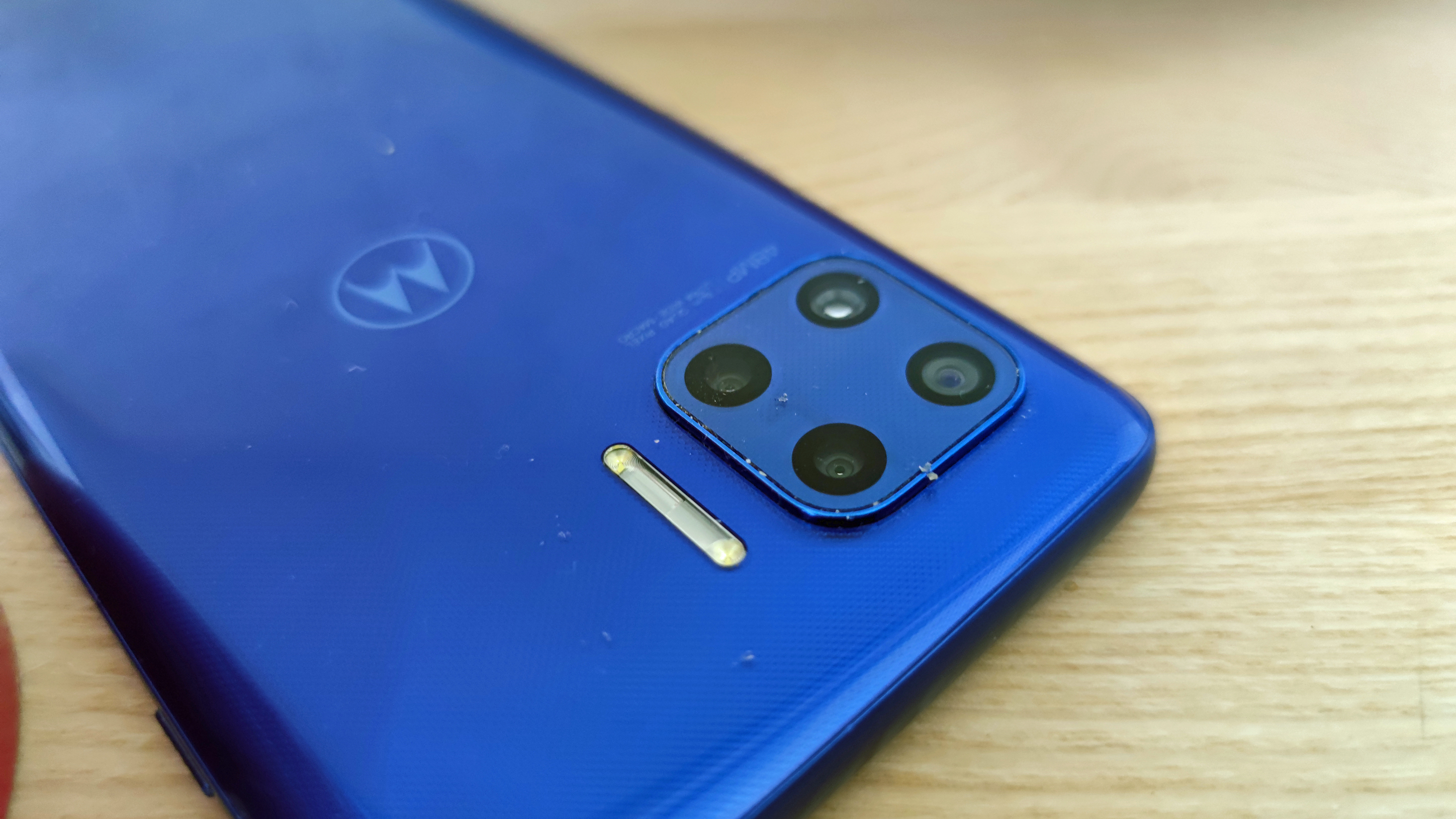
As the name suggests, the Moto G 5G Plus is a 5G phone, and while your mileage with this new form of connectivity may vary depending on region, we managed to connect in various different places.
Many of the current uses of 5G necessitate pretty good hardware, however – if you’re streaming movies and shows you’ll want a good screen, and if you’re playing games online you’ll want a good chipset, so we’re pleased Motorola didn’t cut corners with this phone, otherwise the 5G may have felt a little redundant.
While the Moto G 5G Plus is good for gaming, we found that audio from its single down-firing speaker sounded a little tinny, so you may want to use headphones or earbuds if you’re going to use the device for gaming or playing music.
Software
The Moto G 5G Plus runs Android 10, and it’s ‘stock’ Android, just as Google designed it, without the bells and whistles most companies add when they fork it for their devices.
That said, Motorola does bring a few tricks of its own to the party, and foremost of these is Moto Actions, which let you access various functions using gestures: Fast Torch turns on the flashlight when you shake the phone twice, twisting the phone opens the camera app, and so on. These take a little while to get used to, but they can be pretty useful and fun once you do – well, until you take the phone out on a run and find yourself endlessly triggering them all.
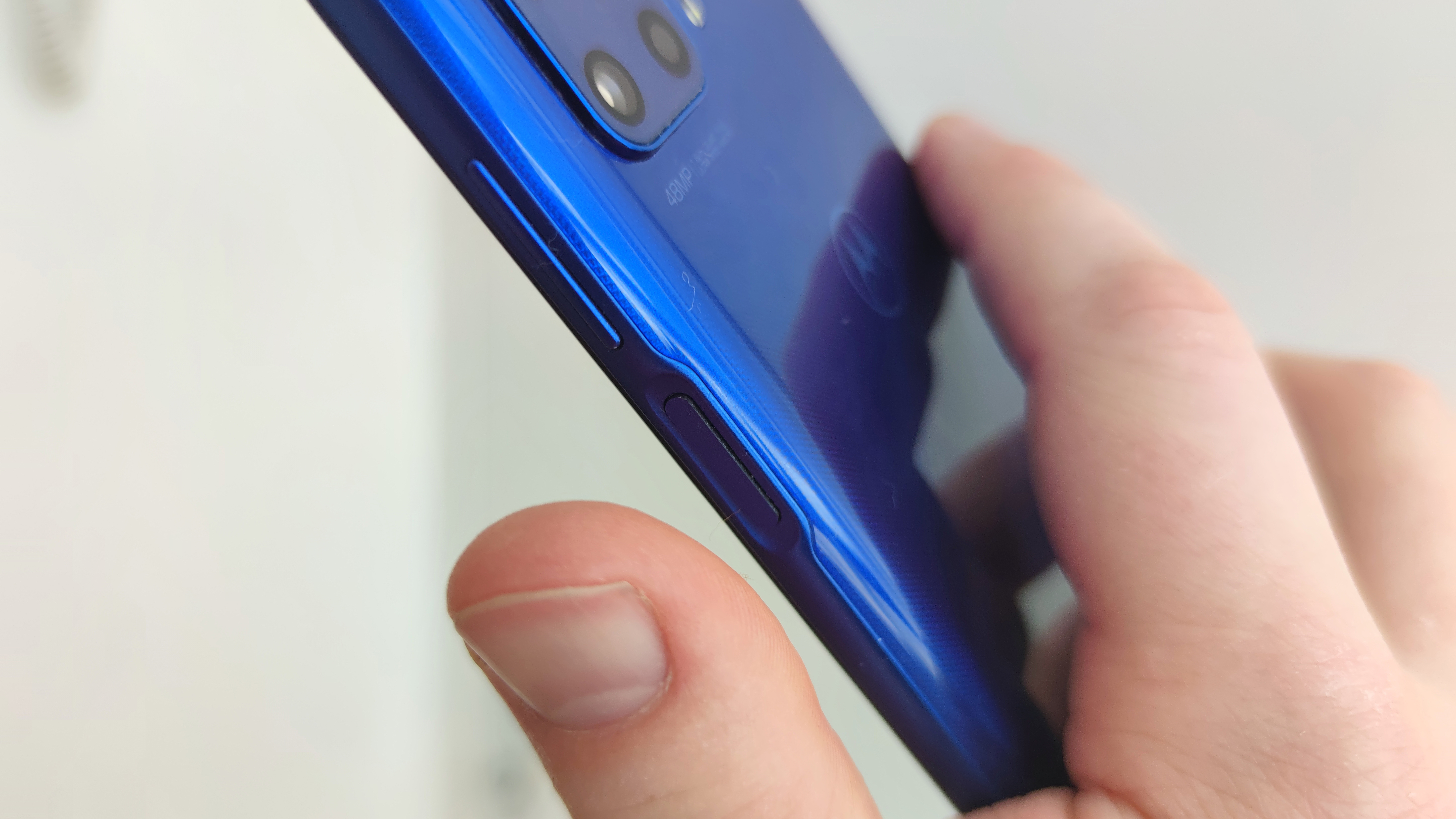
There’s also My UX, which Motorola introduced with the Motorola Edge, and which lets you change the font, icon size and color scheme of the phone’s UI. Combined with stock Android’s selection of useful widgets, it means you have a wide range of options for customizing your phone.
A new addition to My UX here is a cool feature that uses the fingerprint sensor – if you tap it twice while the phone is on, it’ll bring up six quick links that you can easily select. As an example of how to use this, Motorola suggests tapping one of the links to take you to Google Maps directions for a spot you frequent, and we found it useful for adding phone numbers we often call so that we could quickly access them.
The fingerprint sensor didn’t always pick up our touch if we did it too quickly though, so sometimes we had to hit it four or five times to access the shortcuts. After trying it a few times, we learnt to tap it slower, but it took a little getting used to.
Generally, the Moto G 5G Plus feels pretty snappy to navigate – and this isn’t the case with all Moto G phones, so the 5G Plus felt pretty enjoyable to use as a result.

Battery life
Motorola tends to pack pretty big batteries into its Moto G line of phones, and there’s no exception here, as the Moto G 5G Plus has a generous 5,000mAh power pack.
The Moto G 5G Plus lasted us a whole day every day we used it, regardless of whether we were just scrolling through social media now and then or playing lots of games, streaming music and watching Netflix on our lunch break.
That said, the phone’s ability to last beyond a day wasn’t consistent. Sometimes we’d get a good way into a second day before it needed powering up, but other times it felt safer to charge it overnight. Still, very few phones last for a full second day of use, so we can’t mark the G 5G Plus down there.
The charging speed here is 20W, which is a step up over most Moto G handsets, and while it’s not ‘fast’ by any means (not when quite a few phones now have between 30W and 65W charging), anyone used to Moto G phones will find it snappy.
We found that it took just under two hours for the phone to charge to full, although as with most handsets that was front-loaded, so it was at roughly 65% after an hour on charge. There’s no wireless charging but that’s to be expected for a phone with this price tag.
Should I buy the Moto G 5G Plus?
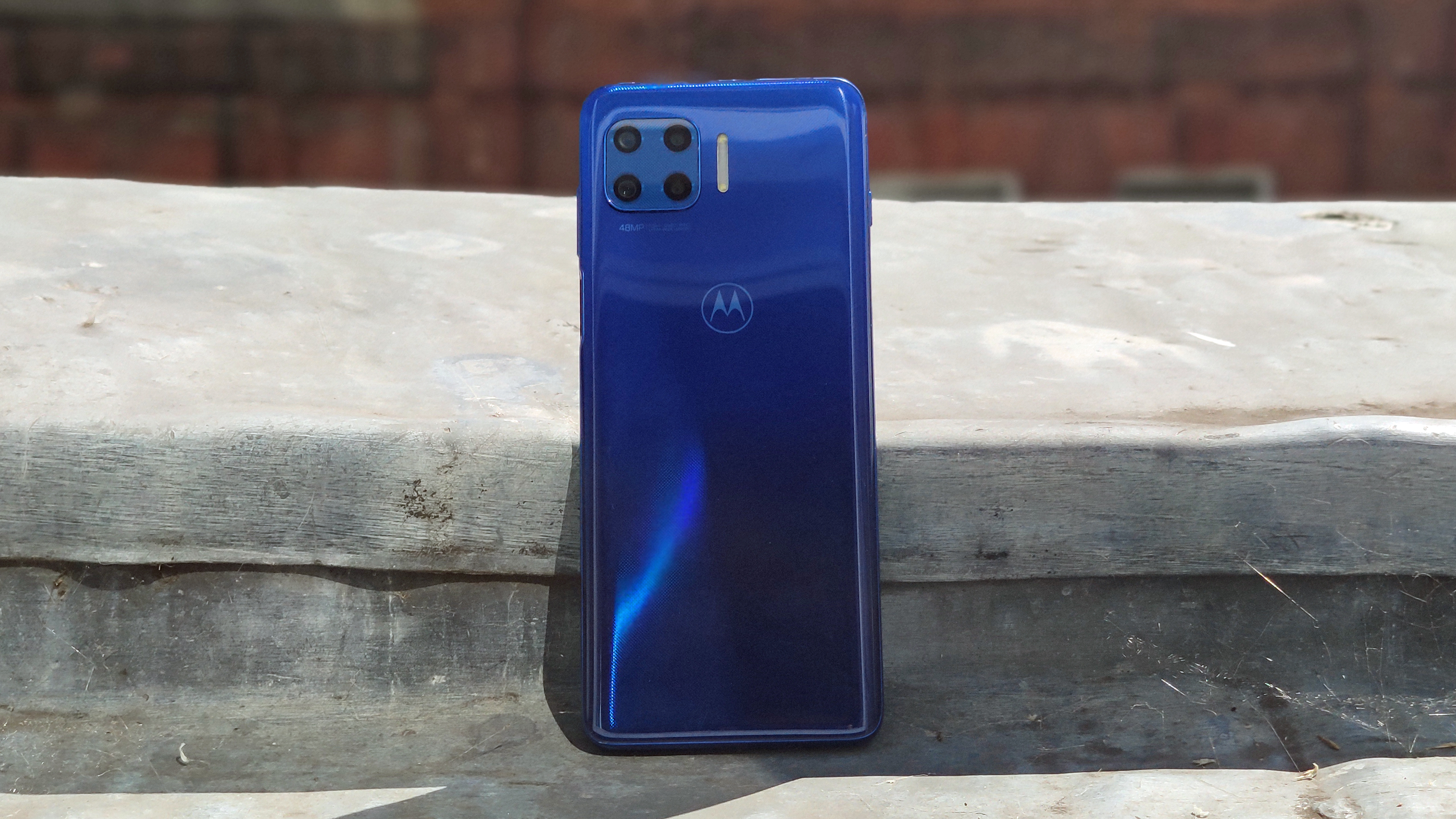
Buy it if
You want an affordable 5G phone
The Moto G 5G Plus will get you connected to 5G without you having to pay a premium - if that's what you want from a phone, look no further.
Double-tap shortcut sounds useful
If you think you'd really get use from the feature where you double-tap the power button to bring up shortcuts, that's a valid enough reason to consider the phone, as few handsets have navigation tricks like it.
You don't want to charge frequently
We were impressed by how long the Moto G 5G Plus lasts between charges, particularly since it has a pretty big screen to burn power, and it's a handset that'll last you through a full day regularly.
Don't buy it if
You need top camera capability
The Moto G 5G Plus doesn't have bad cameras, and they'll hold up to similar-priced rivals, but if you want to take top quality snaps you might want to look for a more premium device.
You want top-quality design
The Moto G 5G Plus bears a striking resemblance to its budget siblings, with a big blue rear and fairly big bezel, so if you want a phone that looks good in the hand maybe consider the Motorola Edge instead.
You don't think you need 5G
The Moto G 5G Plus brings 5G connection to low-cost phones - but if you don't care about 5G just yet, and can stick to 4G for a few more years, its core selling point is redundant to you.
First reviewed: October 2020

Tom Bedford joined TechRadar in early 2019 as a staff writer, and left the team as deputy phones editor in late 2022 to work for entertainment site (and TR sister-site) What To Watch. He continues to contribute on a freelance basis for several sections including phones, audio and fitness.
